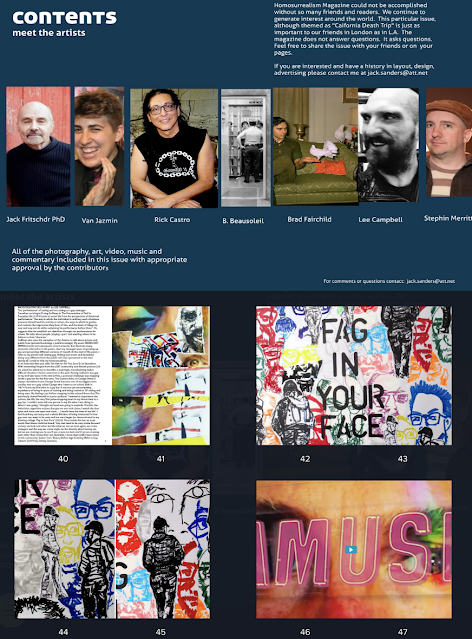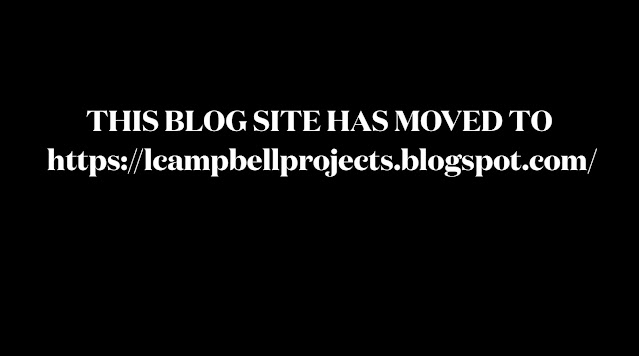WRITING
Scrapbooks, secrets and stories ... I’ve published a reflective account about poetry and film work about my teenage scrapbook in the latest issue of Body Space Technology journal. Read here: https://www.bstjournal.com/article/id/9882/
#digitalstorytelling #performanceart #performancepoetry #multimedia #technoparticipation
Thank you @StepAwayMag for publishing one of my poems in Issue 35
http://www.stepawaymagazine.com/
#poetry #queerflaneur #flaneur #psychogeography #queerwriting
Thank you @Chri5rowell for including my research paper on digital pedagogy and disruption in latest issues of @ualspark
https://sparkjournal.arts.ac.uk/index.php/spark/article/view/167
#digitalstorytelling #digitalpedagogy #criticalpedagogy #technparticipation #technoempathy #online #disruption orytelling #performancepoetry #spokenword #liveart #performanceart
Thank you streetcake magazine for publishing 'Piss Off' (1999) in Issue 81
https://www.streetcakemagazine.com/issue.html
#blackoutpoetry #visualpoetry #eraserpoetry #blackout
Great seeing my poem ‘Bears with Bananas and Bubbles in their Boxers’ published in @cityastheatre ‘Encounters’ Thank you @elistagram and @fi_ku! #queerwriting #poetry
'Covert Operations: Acts of Secrecy and Homosexual Identity' is a reflective account of three of my recent films I have just published in Edition 16 'Secrecy' of Hakara: A Bi-Lingual Journal of Creative Expression.
https://www.hakara.in/lee-campbell/
#videopoem #shortfilm #queerfilm #videopoetry #animation #multimedia #performancepoetry #videoart #poetryfilm #homosexuality #lgbt
SEE ME: Windows to the Self of the Performer-Autoethnographer' published in The Autoethnographer
Thank you @theautoethnographer for publishing my reflective account of recent #poetryfilm and performance practice I really enjoyed the process of working with you and thinking about what I do in relation to #autoethnography. Read here:
https://theautoethnographer.com/see-me-windows-to-the-self-of-the-performer-autoethnographer/
#videopoem #shortfilm #queerfilm #videopoetry #animation #multimedia #performancepoetry #videoart #poetryfilm #autoethnography
Thank you Gobjaw for including two of my poems in your anthology 2019-2022. A brilliant achievement for all your hard work supporting fellow creative wordsmiths
#spokenwordpoetry #spokenwordartist #poetrycommunity #words #spokenword #poetry #performancepoetry #poet #poem

MY POEM 'DIRTY LOOKS' PUBLISHED IN GOB JAW POETRY PRESS ZINE 8
My poem SEEING/NOT SEEING has been published in Queerlings new queer literary magazine
https://queerlings.com/leecampbell/
(University of the Arts London)
Publishers: Peter Lang USA
Contributors
Gustave J. Weltsek, Mark Ingham, Glenn Loughran, Fred Meller, Gavin Baker, Peter Bond, Alex Schady, Adrian Rifkin and John Seth, Jo Addison and Natasha Kidd, Christabel Harley, Richie Manu, Simon Taylor, James Layton, Lucy Algar, Claire Makhlouf Carter, Laura Davidson, Mark Childs and Anna Childs, David Parkes, Pauline de Souza, Kevin J. Hunt and Fo Hamblin, Aaron D. Knochel, Adrian Lee, Jo Hassall, Neil Mulholland, Adam Cooke and Paul Jones, Cathy Gale, Paul Vivian, Gill Foster, Steve Fossey, Nic Chalmers and Sarah May, Nathan Geering
Abstract
This collection comprises of a package of two publications (monograph and companion).
Leap into Action asks: ‘What happens when performative arts meet pedagogy?’ and views performative teaching as building students’ understanding of complex ideas and concepts ‘through action’. It provides the theoretical, philosophical and conceptual terrain by setting forth the scholarly rationale as to what performative pedagogy is at this moment across Art & Design education. Contributions are made from individuals and groups across art and design disciplines who deploy innovative pedagogic approaches with an emphasis on performativity. To underline that Art & Design does not only happen within the institution, Leap into Action provides rich intertextual material demonstrating practical usage in and out of the classroom by bringing in and drawing upon the experiences of practitioners.
As you journey through contributions gaining insight into pedagogic perspectives designed to help you (re)imagine the possibilities, it is intended that Leap into Action will prompt new angles to look at your practice including and beyond pedagogy, mainly in terms of art, design and performance and in disciplines further afield. Whilst Leap into Action engages with performative pedagogies through disruptions, interruptions, tricksters, liminalities, affective bodies, sensory encounters, and technoparticipation, it calls into question what risk-taking means in an arts school context and the tension (even paradox) that exists between wanting to create a safe, welcoming and inclusive environment and provoking students out of their comfort zones through experimental performative pedagogy and playfulness, getting students to critically engage. Whilst engagement with performative strategies may be a ‘risky’ strategy, the rewards can be great. Enter the unknown, take a leap into action and have fun.
The second publication in the Leap into Action volume on critical performative pedagogies extends the research and the argumentation addressed in the monograph and provides (further) practical insight into how one might apply performative pedagogy in class; how it [performative teaching and learning] looks day to day – working with both undergraduate and graduate level students. How can the would-be performative tutor engage in critical performative pedagogies through disruptions, interruptions, tricksters, liminalities, affective bodies, and sensory encounters? This publication operates as an instruction manual that is textbook – oriented for instructors to use as a 'how to' guide on using performative pedagogies, on the sophisticated deployment of performative strategies in action, in practice. Each contribution follows an easy- to-follow presentation style that starts with a contextual introduction outlining a specific innovative pedagogic performative strategy. The strategy is then laid out as a set of instructions (think Fluxus for teachers), with self-reflective discussion to conclude. This echoes a three-stage learning process, Anticipation, Action and Analysis, a reflective model of practice for you to use and adapt to suit your own practice trajectories.
The volume is structured into three distinct yet interrelated discussions. Each set of chapters proposes how performative pedagogies offer a means to challenge selected concerns facing Art & Design education and more broadly, similar concerns within teaching and learning in Higher Education today.
PART I RADICAL NOT-KNOWING: DISRUPTIONS, INTERVENTIONS, LIMINALITIES
The first set of chapters proposes how the strategies of performative pedagogy correspond to the terms: ‘disruption’, ‘intervention’ and ‘liminality’ and considers how these apply to teaching and learning as ‘risky’ pedagogic strategies / forms of creative expression that do not necessarily correspond with conventional criteria that lean towards focus, precision, clarity, coherence and structure.
PART II PROXIMITIES AND ENCOUNTERS: BODIES, SENSES AND AFFECTS
PART III TECHNOPARTICIPATION: TRAVERSING PHYSICAL/DIGITAL THRESHOLDS
The final set of discussions explore aspects of the three terms focusing on the increasing importance of digital and virtual realities in students’ lives to advocate that never has there been a time in which the meanings of access are so broadened via technological mediation – with some chapters emphasising how access via technological mediation draws on all senses.
PUBLICATION TWO: COMPANION
Campbell, L., 2019. Deprivation Strategies: Increasing Public Understanding of Vision Impairment Using Performative Pedagogy. Body, Space & Technology, 18(1), pp. 126–144. DOI: https://doi.org/10.16995/bst.308
Campbell, L., and Jordan, M. 2018. ‘The Heckler’s Promise’, Performance Paradigm 14, Performance, Politics and Non-Participation.
https://www.performanceparadigm.net/index.php/journal/article/view/216/0
Campbell, L. 2018. ‘Rupturing the contract: Performative pedagogy, power relations and interruption’, Spark: UAL Creative Teaching and Learning Journal
https://sparkjournal.arts.ac.uk/index.php/spark/article/view/104
Campbell, L. 2017. ‘You Don’t Need Eyes to See, You Need Vision: Visual Impairment, Performative Pedagogy
and Technology’ Journal of Pedagogic Development. Volume 7 Issue 2
https://journals.beds.ac.uk/ojs/index.php/jpd/article/view/397/594
Campbell, L. 2017. ‘Technoparticipation: The use of digital realia in arts education’, Spark: UAL Creative Teaching and Learning Journal, Vol 3 / Issue 1 (2017)
https://sparkjournal.arts.ac.uk/index.php/spark/article/view/74
Campbell, L. 2017. ‘Collaborators and Hecklers: Performative Pedagogy and Interruptive Processes’
in Scenario - Journal for Drama and Theatre in Foreign and Second Language Education. Volume XI, Issue 1/2017 http://publish.ucc.ie/journals/scenario/2017/01/Campbell/05/en#H1-3
Campbell, L. 2017. ‘Anticipation, Action and Analysis: A new methodology for Practice as Research’, PARtake: The Journal of Performance as Research, Volume 1, Issue 2, Summer 2017 (Participation in/and Research: Ethics, Methodologies, Expectations), Article 7. ISSN: 2472-0860
http://scholar.colorado.edu/partake/vol1/iss2/7/
Campbell, L. 2017. 'You Don't Need Eyes to See You Need Vision' In Sight, published by the Royal National
Institute of Blind People, April 2017 http://www.rnib.org.uk/insight-online/fine-art-adaptations-student-vision-impairment
deploying acts of visual negation’, Body, Space, Technology. ISSN: 1470-9120
http://people.brunel.ac.uk/bst/vol16/leecampbell/
Campbell, L. 2017. Technoparticipation: performance art, mobile phones and audio instructions. Vocal Eyes. Available at http://vocaleyes.co.uk/technoparticipation-performance-art-mobile-phones-
Campbell, L. 2016. ‘Cinematic Interruptions’, Viewfinder, British Universities Film and Video Council, November
2016 http://bufvc.ac.uk/articles/cinematic-interruptions
Campbell, Lee, 2014. Performance, participation and politeness’ using Performance Art as a tool to explore the liminal space between art and theatre and its capacity for confrontation’, in (eds) Remes, Outi. Leino, Mariko and MacCulloch, Laura, Performativity in the Gallery: Staging Interactive Encounters (Oxford: Peter Lang Ltd., 2014) ISBN 978303430966
Campbell, L. 2014. ‘Beyond Pollock: On visual art objects as non-traditional forms of performance document’, edited by Toni Sant, The International Journal of Performance Arts and Digital Media. Vol. 10, Iss. 1,2014
http://dx.doi.org/10.1080/14794713.2014.912499

























Comments